Don't wanna be here? Send us removal request.
Text












FINAL 12 IMAGES
Image 1: Turanga sign
This is a sign in front of one of my neighbour's house that says Turanga. Not sure what the bottom half of the sign says but I think it is a reference to the Turanga Creek which the Whitford township is founded on. Thought this was appropriate to start the series as it shows where in the world I am. Mid-shot, leading lines.
Image 2: Bee farms
As I walked along my road, I discovered that there were bee farms at the front of one of my neighbour's house. I wanted to include this image as I didn't even know that we had that on our street and I thought it showcased the different hobbies or jobs that people could have on the farm.
Image 3: Horse
Everyday I drive past these 3 horses that graze in a pasture but I have never actually stopped to look at them before. When I went to take photos of them, the horses actually ran away from me but after waiting for 10 minutes, the horses came back and I was able to capture a photo of this horse baring its teeth at me. As there was a foal, I think the two other horses were trying to protect it from me. To take this photo I used a macro lens. Horizontal lines. Horse in between the trees in the background.
Image 4: Malcolm
This is a photograph of Malcolm. He owns a lot of cattle which graze in pastures all along Trig Road. It is common to see him and/or his wife driving along the road on their quad bike. He is a big part of our community.
Image 5: Tire marks
Muddy tire marks that have been printed into the ground. Trucks, cars, quad bikes, many vehicles pass through our road. The road is quiet and empty most of the time, but when you look at the ground you can see the traces of human activity left behind.
Image 6: Cattle
There are many cows that graze along our street including at my house. I wanted to include a mixture of shots so I tried to take a close up using a macro lens. Shallow depth of field. I decided to focus on the registration tag of the cow as it shows who owns the cows and where in the country they are located. I thought it was necessary to include an image of a cow in my portfolio as they are so common on my road. Even if you can't see them, you can probably hear them from afar.
Image 7: Fence
This photograph of a fence and gate is located at my house. Using the fence as a leading line to draw the viewers attention to the gate and the soil. You can see the way that the soil has been pugged (damaged) from the years of grazing that has happened on our land. The land changing over time.
Image 8: Sheep
When I approached the herd of sheep to try take photos of them, they all ran away from me. The only sheep that didn't run from me and actually tried to approach me was the only black sheep among the white sheep which I thought was funny. I took the photo through the fence and put my settings on a shallow depth of field so that the sheep was clear. horizontal lines with the fence. The fence also shows context of how the sheep are situated on my road.
Image 9: Chicken coop
A photograph of a chicken coop that my dad built for when we used to own chickens. It is now neglected and overgrown as we haven't needed to use it in a few years. Throughout my street I have noticed structures that have been built for the different animals. Some our upkept and some appear neglected.
Image 10: Buu An Lai
This is my father as he works on renovations around our house. I chose to photograph him because for all of my life, I have witnessed renovations wherever we have lived. I have family members who are builders or work in other hands on careers. In my world this is something I am very used to. I have noticed on my road that some of the community is also very hands on. Such as Malcolm, mentioned before, I have neighbours who work outside or care for the farm animals.
Image 11: Burning Pile
This is a burning pile that sits in my backyard. It is common to see smoke sometimes while passing through my road as people burn things. I noticed a lot of people have these piles in their yard. It is a common sight.
Image 12: Construction
This is a photograph of construction on my road. As I learnt about how farmland has been altered to make way for pastures, I thought it would be interesting to photograph how a a big section of trees had been cut down in the background and then the land was sold so that people can now build houses there. A few years ago, there was a forest of pine trees and I witnessed in real time when they cut down a bunch of those trees. The natural landscape had been altered to make way for pastures and now the land is altered again for development.
0 notes
Text
500 WORD STATEMENT
“Where in the world am I? And what stories can I tell?”
After living in different areas around East Auckland, I can say that the most exciting of them all has been living on Trig Road. Situated in south-east Auckland sits a rural town called Whitford and on Trig Road is where I have lived for nearly 8 years now. The Whitford township was founded on the headlands of Turanga Creek where multiple pā and kāinga sites were once located. (Wikipedia contributors, 2023) After some research, I discovered that Whitford had been the location of a major Pā site called Te Awakarihi. What was once a predominant fishing settlement, notable for considerable drying racks and areas for food storage, has now been altered and is home to many families and animals. (Auckland Council, N/A) Trig Road is a very large road, spanning a distance of 4.3 kilometres, where cattle, horses and sheep inhabit the land along with humans. On Trig Road, being outside is where we connect with other people. Our sense of community is strong and people are friendly with each other. It is not uncommon to see someone drive past on their quad bike and stop to have a conversation or simply just give each other a wave.
Through visual storytelling, I want to provide a look into the lifestyle and community I am surrounded by as I thought it would be different from what most people are used to. The odd structures built for animals and insects, the people who built and care for them, the animals, the traces of human activity passing through. These all work together to make Trig Road special. It was interesting to photograph the environment knowing that although the land seems natural, it had been changed many years ago to make space for pastures and pine trees were introduced to the area. Even today, alteration of the land can be seen as trees are cut down and more housing is starting to develop.
When we first moved to Whitford, my brother and I used to spend a lot of time hanging out with my neighbours. We would frequent each other's houses but the most memorable moments were when we would go walking and explore what our street had to offer. As we grew up, the time spent together became less and less, resulting in me choosing to stay inside. Through this project, I was able to rediscover the quirks and qualities that made living in a rural area just more interesting and different than suburbs or the city. All of my photographs were taken outside. I thought this was most appropriate as it truly captures the essence of living in a rural area and how as kids we just like to walk around and explore. Chevron Hasset, Yekaterina Gyadu, Tatsiana Chypsanava and Tira Khan are artists who have inspired my work throughout this project, helping me to develop a better sense of the documentary photography genre. These artists connect to the places they photograph, giving spectators a raw and vulnerable view into the communities they photograph and share their stories.
REFERENCES
Wikipedia contributors. (2023). Whitford, New Zealand. Wikipedia. https://en.wikipedia.org/wiki/Whitford,_New_Zealand
Auckland Council. (N/A). Unitary Plan Appendix 21 Treaty settlement legislation - Statutory acknowledgments. Auckland Council. https://unitaryplan.aucklandcouncil.govt.nz/Images/Auckland%20Unitary%20Plan%20Operative/Chapter%20M%20Appendices/Appendix%2021%20Treaty%20Settlement%20Legislation%20-%20statutory%20acknowledgements.pdf
0 notes
Text



Tira Khan, A Place I Never Knew (India), 2019, https://tira-khan-yp7m.squarespace.com/rampur-india
Tira Khan is a photographer born and based in Boston. Khan uses documentary photography to explore ideas of family, architecture of place, and the formal and informal moments. Her project “A Place I Never Knew (India)” is a project that explores her family’s ancestral home which is one of the last muslim-majority cities in India. The city her family is from was once honoured under the British Raj but is now suffering from poverty, literacy and state conflicts. Khan photographs the after effects of the world war. I really liked this project as it reminded me of Yekaterina Gyadu’s Black Eastern European project except for Khan she is photographing a place that isn’t familiar to her. The city has deep connections to her family lineage but is foreign to her personally. We get to explore this city that people might not have heard of, with her as she photographs the architecture and everyday life of the citizens.
0 notes
Text
writing bio practice
Mikaela Lai is a New Zealand born Chinese photographer who has lived in Auckland all her life. Ever since a young age, Mikaela had an interest in cameras and taking photographs, always having her digital camera in hand. This led to her pursuit in photography in high school. Focusing on staged photography and portraiture, Mikaela found a genre that she was comfortable working in. She was awarded with an outstanding scholarship for her level 3 NCEA board in 2023. Entering university, Mikaela faced a challenge. Feeling lost on how to express herself in a way that follows the brief, Mikaela had to pull herself away from stage photography. She began to develop an interest in documentary and environmental photography, her now preferred photography genre.
0 notes
Text
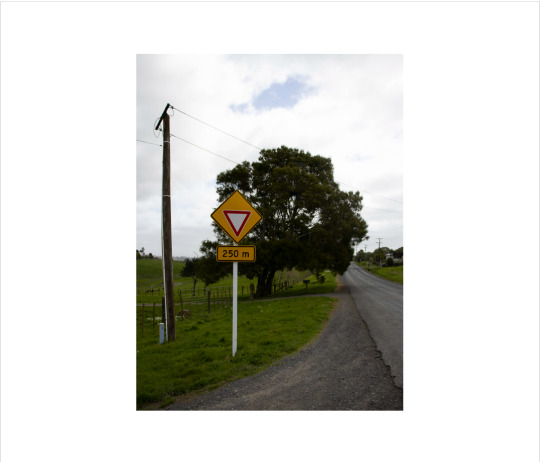
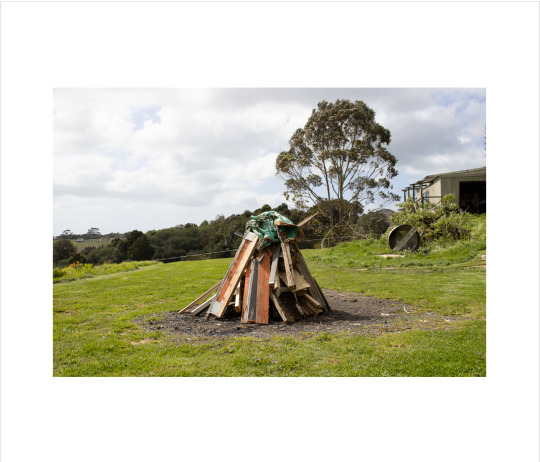
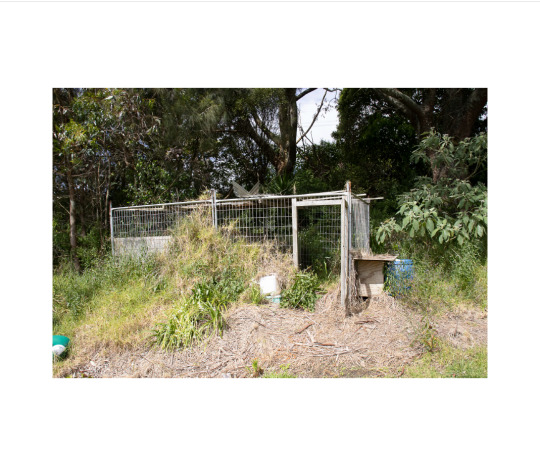

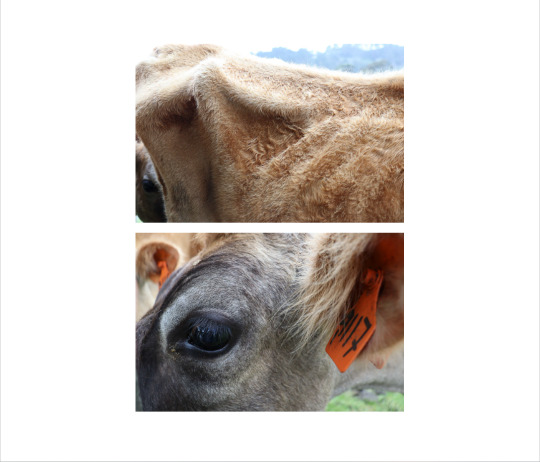
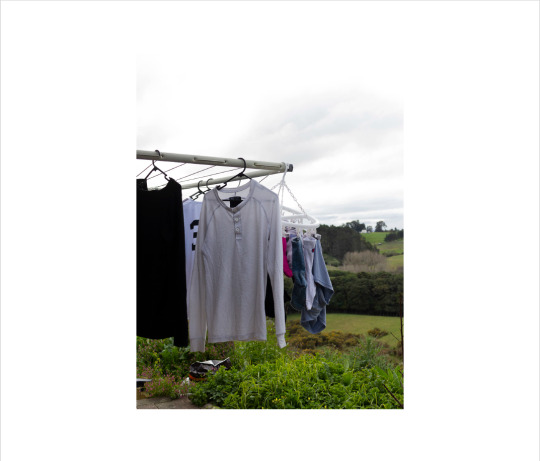


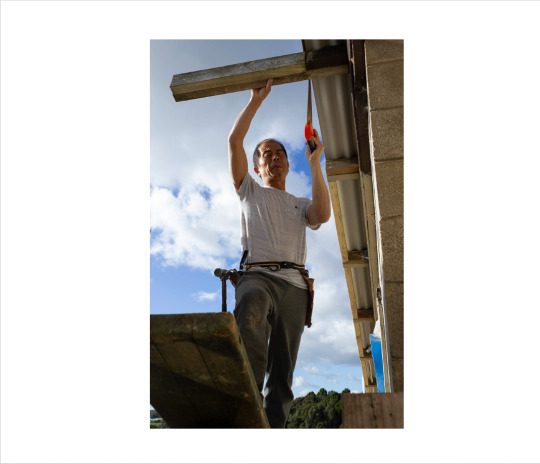


photobook practice week 10
I tried to think about the hourglass editing so I tried to start and end my photo series with a photo of the street and the photos in-between are like people and things found within my street.
0 notes
Text
Where in the world am i?
What are the particular, peculiar oddities, beautiful, raw, hidden gems of your surroundings?
The road I live on is very large, it inhabits not only people but many animals such as cows, horses, sheeps and birds. The community is quite lively, people are friendly, you would often see a neighbour driving around a quad bike. There is also a waste disposal located on one end of our street which could make my stuff different from other people
Where are your favourite hangouts, haunts, sites of leisure, places of meeting or gathering?
When I first moved to Whitford, my brother and I used to hang out with my neighbours a lot. We would go to each other's house, play on their trampoline, play games, watch movies, we would go walking together, we would walk our dogs together but as we got older we didn’t have as much time to hang out with each other. The land we own is 10 acres long and at the bottom of our land, it used to be used for paintball. The remnants of the paintball area left huts and paintball bullets scattered around the area and my neighbours and I used to go exploring in the area. We even tried to build our own hut. Now my favourite site of leisure is to be in the comfort of my own home. I like to keep to myself or to spend time with my family.
Are they interiors, exteriors, or both?
Mainly exteriors as I think that is the best quality of living in a rural area however if I was to capture what I truly like to do and hangout at, they would be interiors.
Where do you connect with people and places?
On Trig rd I can connect with people as I walk along the road. When passing each others on the road, we wave to each other or sometimes we stop to talk to each other. We can connect with
What do these places look like?
Rural, farm area. A lack of footpaths and street lamps. Big trucks and quad bikes. Grass and trees for days. Animals at every corner.
310 words
Photographers that I have looked at/ will influence me
Chevron Hassett (documentary/landscape)
Luca Sola
Tatsiana Chypsauara
Keith Davis Young
Yekaterina Gyadu (Black Eastern Europe project)
Tira Khan
How might your photographs convey a connection to them?
0 notes
Text
Through A Lens Darkly: Black Photographers and the Emergence of a People (2014)
I thought that this documentary was really interesting to watch as it discusses the art of photography for African Americans from slavery to now. It really put into perspective for me how there were times where art was made inaccessible to minorities especially people of colour. While watching it definitely made me think about the reading “Can I take a photo of the Marae” by Natalie Robertson and how for both African Americans and Maori, in history they were the spectacle and not the people who got to be behind the camera. In media African Americans would either be invisible or they would be portrayed in dehumanising and horrific ways (slaves, blackface, lynching etc.)
0 notes
Text



Yekaterina Gyadu, BLACK EASTERN EUROPE, N/A, https://www.ygyadu.com/personal/blackeu
Yekaterina Gyadu is a Russian-Ghanaian photographer based in Brooklyn, New York. Her work focuses on documentary and portraiture photography and has a special interest in editorial and fashion work. Documentary photography is used in her personal work whereas portraiture, events, lifestyle photography is for her professional work. Black Eastern Europe is a personal project of Gyadu’s that explores the identity and history of Black Eastern Europeans. The project started as a documentation of her personal Russian-Ghanaian identity turned into a larger community project to bring awareness of Black Eastern Europeans. This project combines documentary photography that had been taken over a decade throughout her life that combines Russia and Ghana and portraiture of Black Eastern Europeans. This project had started from Gyadu's realisation that not many people were aware that Black Eastern European people existed and were surprised upon discovering her heritage. I was really interested and happy that I discovered this project because I feel as though it follows the assignment brief exactly. The photographer captures what it is like to be Russian and Ghanaian living in Eastern Europe and the community that she grew up in. She is showing what her life is like, the worldview she knows, which may be different to how other people live. I especially liked the goat and cow images as it reminded me of my own photos about living on a farm. With these images as well and some others in the project, you can see there is this slight filter on the image which suggests it could be some of the photographs she had been taking over the last decade. You can really notice this difference against photos like the third pair where the photos appear more high definition.
0 notes
Text

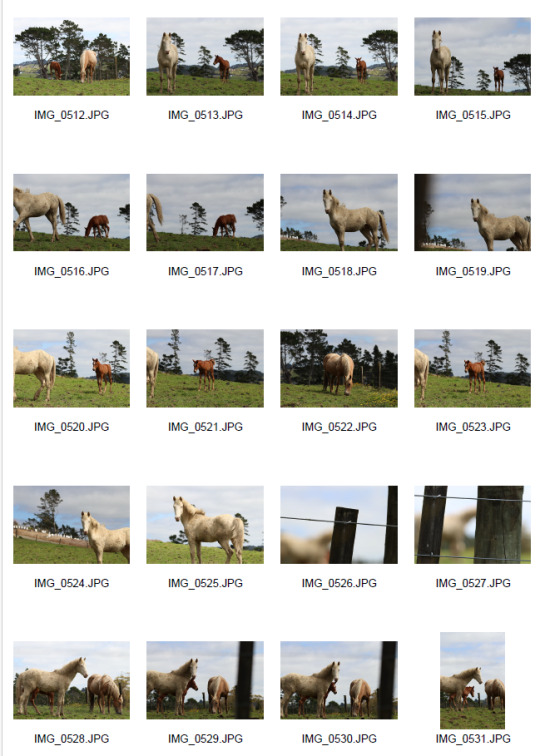



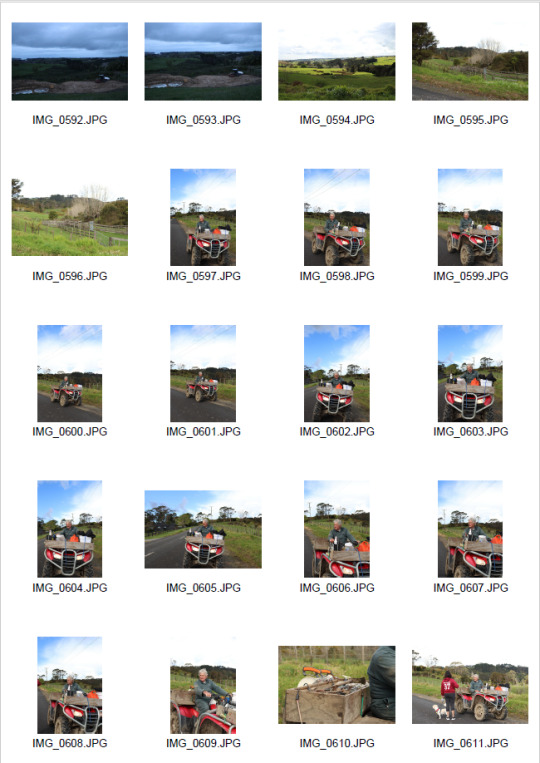








WEEK 11 PROOFSHEET
Throughout the week I continued to walk around my street and take photos. While taking my images I tried to think about how I could incorporate the history of this land that I learnt about through my images. I thought about how maybe I could write about how the people who used to live here were linked to fishing and how now in current days the land is used for farm animals especially cows and grazing horses. The land is also being used for waste disposal management. I want to try retaking the images that I took at night as they didn't come out the way I wanted them to. Especially the photos of the construction because in the background you can see where a forest of trees used to be and how they had all been cut down. This links back to the idea of altered landscapes and how the natural land had to be altered to create farm land.
0 notes
Text



Tatsiana Chypsanava, Ruatoki, 2022, https://www.chypsanava.com/ruatoki
Tatsiana Chypsanava is a photographer based in New Zealand who specialises in documentary photography. She is a descendant of the Komi peoples of the Siberian North West Ural which I think influences what her photographs as she focuses on indigenous rights, migration and environmental issues. This project captures the people of Ruatoki Valley who had been targets of the paramilitary raids in 2007. I chose these images as I really like the colour profile across all of her images. This makes me want to get better at editing as maybe it would help my images to appear more cohesive. I also liked the composition of the image with the horse. I like how the foreground is not in focus and is actually dark so that the viewers attention is directed to the horse.
0 notes
Text



Chevron Hassett, The Children of Maui, 2019, https://chevronhassett.com/#/thechildrenofmaui/
Chevron Hassett is a New Zealand photographer whose work embodies the Maori concept of Whanaunatanga. For my own project I think Chevron Hassett’s work has the biggest influence and inspires me the most. With this specific project of his, The Children of Maui, he photographs in a rural area which I assume is familiar to him. This is similar to what I am planning to do, photographing around where I live. I really liked this project and these specific images because the subjects in his photographs are all different yet the images all work well together to tell a story. The image with the horse reminds me that I should explore different lighting techniques as it can really change up the images.
0 notes
Text
week 10 reflection and feedback
Last week I was still unsure of what I wanted to do for my theme. I have decided on taking photos on my street. After talking to Natalie, we discovered that there is an old pa site (awakarihi) located where I live and so it would be interesting for me to research more about it. Look at how the land was used back then and compare it to how it is used now. There is also this idea about how farm land isn't natural and exists from people altering the landscape.
For submission I also need to look at a few more artists that relate to the photography genre that I leaning towards. I think the genres I am going for is documentary and landscape photography.
0 notes
Text
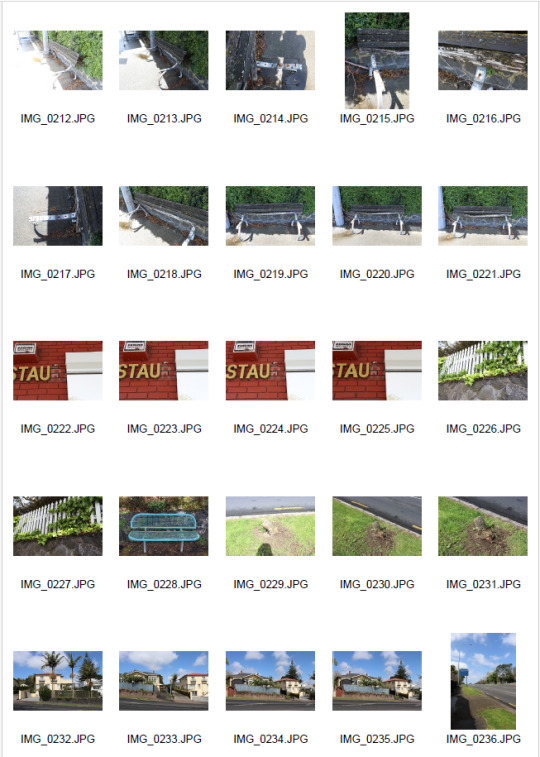











WEEK 10 proofsheet
During this week I was still unsure what direction I should go in for my work. Thus, the photos I took this week explore multiple possible themes. I started by revisiting the sites like the dairy and yum cha restaurant. I also just took some photos as I walked from the bus stop back to my aunt's house. I then also visited a new site which is a restaurant from my childhood which has also been closed down and I took some photos around there. However I wasn't able to get into the building so this might not be a good idea. I also went to Meadowlands which is an area with a heavy Chinese presence to take some photos, this place is somewhere that is very familiar to me as I come here a lot with my family and friends ever since I was young.
The idea that I think I will follow is just capturing what living in a rural area is like and then just taking photos on my street. I am a bit worried that because I am sticking to my street that the images may be repetitive but I think that my street is big enough and interesting enough to get a range of photos. I took quite a lot of images of the cows that live on my street. I tried to take some close up shots but I think I will need a macro lens as I wasn't able to capture the effect I wanted with my normal lens.
0 notes
Text
week 9 feedback
keep it simple
find a theme to focus on. (could look at connection to immigration, "exploring Auckland through the lens of my working immigrant parents", with the dairy and closed down buildings, could look at the idea of loss of childhood, nostalgia)
peeling image of dairy and dad photo were good
why should people care about my work?
do more shoots
0 notes
Text
Can I take a photo of the marae? Dynamics of Photography in Te Ao - questions 1-3
Robertson. N. (2011) Can I take a photo of the marae? Dynamics of Photography in Te Ao Māori. Essay in 'UNFIXED: Photography and postcolonial perspectives in contemporary art'. Jap Sam Books. May 2012.
What is meant by the term ‘the gaze’ in this context?
The gaze, in this context, refers to the scene that has been photographed. The essay discusses how photography has been inaccessible to Māori and that they would end up being models or the subject for Pakeha photographers who got to control/design how the photograph will look like.
Discuss the role of portrait photography in a Māori context. What role does the portrait play?
Portrait photography has become an integral part of the Māori context. The portraits of Māori are held to the same cultural regard as their ancestral carvings. Māori had commissioned many commercial photographers to have their portraits taken however Māori were limited from having a career in photography due to marginalisation/colonisation and the hesitation on the commercialisation of these images.
Provide an example (outside of the text) of how portrait photography of Māori was used in the nineteenth century.
An example of how portrait photography of Māori was used in the nineteenth century is the portrait of Hemi Pomara. This portrait of Hemi Pomara posing in London from 1864 was recently uncovered in 2020 and is suggested to be the oldest portrait photograph of any Māori person.
0 notes
Text




WEEK 8 proof sheet
For the first set of images, I revisited the location of the yum cha place that had been closed down. I walked around the side of the building to try take some photographs of it from a different angle. It also showed more in detail how the building was going to be demolished to make room for a new apartment building. I think I need to revisit again to try get better shots as I am unhappy with these pictures.
I also did the same when I went to the abandoned dairy. I tried to take a side on view as i usually take a front on view of it. I also tried to take some close up shots to show the overgrowth and neglect of the abandoned building and the lack of maintenance.
The second set of images I had taken at home in Whitford. I wanted to focus on what I see everyday. the messiness of living in a rural area. I really liked the photographs where I took the reflection of light and rain. I think I need to keep working on trying to use different techniques such as shallow depth of field to give more variety in my images
0 notes
Text
PHOTOBOOK ANALYSIS
Chen Zhe - Bees & the Bearable https://fotobookfestival.org/portfolio-item/kassel-photobook-award-2016/
I felt drawn to this book as the cover of the book is smaller and of a different colour to the paper stock that was used to print the photographs. It also has Chinese text written all over the cover but some parts of it has been scribbled over. All of these factors worked together to draw my attention and made me want to find out what the book was about. I liked how they used the covers to also separate the two parts that their book is about as it still works together and is cohesive. I liked the layout of the images. The single images on the page with the white border and the text on the page next to it, makes the layout simple and easy to read. Chen Zhe also uses a double spread to change up the layout. Aesthetically I really like it and think it all works well together.
Patrick Slesiona - Blaue Flecken
youtube
The image used on the cover of the photobook was what had made me interested in this particular book. There is no text on the cover so it made me wonder about what sort of images would be inside. I liked how all the images were edited into black and white as I normally shoot in colour and would also like to try shooting in black and white. I liked how their images were laid out. The white borders make everything look super clean. I thought it was also interesting how they included a double page spread but the image is more on one side, it changes up the composition of images and I should consider this for when I edit my images.

Srinivas Kuruganti - Pictures in my hand of a boy I still resemble
youtube
Similar to the previous photobook, the cover image initially caught my attention as there was also no text, only an image. What made me want to look more into this photo book was actually the title, “Pictures in my hand of a boy I still resemble”. I really liked this title as it is poetic and made me curious what sort of images were in this book. Are they staged? candid? For some reason when I read this title I instantly thought that this photo book was something that was vulnerable or intimate? It also reminded me of my own work which I had titled “words I am too afraid to say out loud.” For summative assignment, if I need to give my images a title then I must think carefully about it as it could influence the way viewers look at my photographs. The images in this book reminded me of “Men Carrying Flowers” by Ophelia Mikkelson Jones as they appear candid and have interesting subjects that make me want to know more about them. I also felt like in some of the images there was something youthful but reminiscent about them which I think represents the title of the work very well.
0 notes